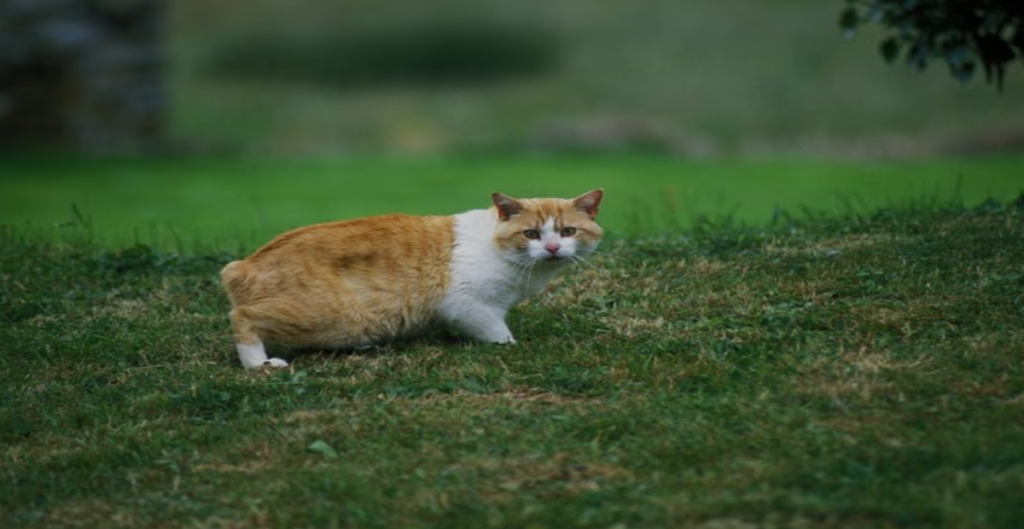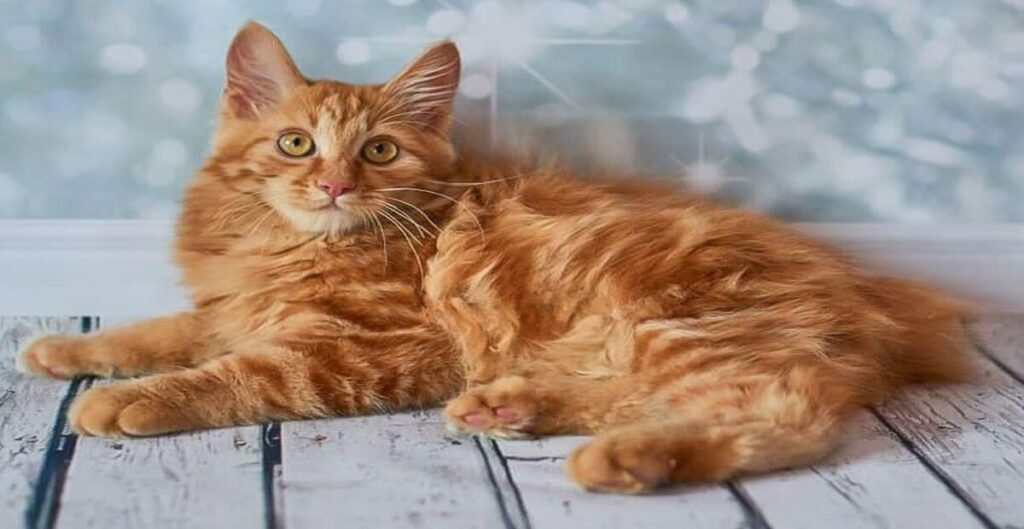
The distinctive appearance of a cat without a tail can attract the attention of onlookers, whether it is the elegant Manx or other breeds such as the Kurilian Bobtail and the American Bobtail. But underneath this endearing quality, there may be underlying health issues. By illuminating the intricacies of tailless cats and the range of neurological problems they may experience, this piece will enable you to provide your feline companion with informed care.
Unraveling the hidden mysteries of genetics and Manx syndrome

The Manx is the breed most commonly associated with taillessness. The development of the spine and spinal cord is affected by a specific gene mutation that these cute cats inherit. They have the desired tailless trait as a result of this mutation, but there is also a possibility of ‘Manx syndrome’. This series of abnormalities can affect the nerves, related organs and the lower back.
Recognizing the spectrum: Different levels of impact
It’s important to keep in mind that not every tailless cat, regardless of breed, has similar problems. Manx syndrome varies widely in severity, with some cats in excellent health and others having severe difficulties.
Examining the neurology maze: Potential concerns

The nervous system is the central nervous system responsible for controlling movement, bowel and bladder, and other body processes. Adapted cats with Manx syndrome may experience a variety of neurological problems, including:
Mobility issues: include weakness, incoordination, trouble walking, loss of balance, or a “bunny” gait on the back leg.
Bowel and Bladder Dysfunction: Pain and toileting difficulties result from nerve dysfunction that causes a person to lose control of urination and defecation.
Paralysis: In extreme cases, total paralysis of the lower limbs may occur, requiring substantial attention and handling.
Chronic discomfort: Arthritis associated with Manx syndrome or spinal abnormalities can cause discomfort, which can reduce a cat’s quality of life.
Identifying the symptoms: Early identification prevents death

Early recognition and treatment of neurological problems in tailless cats is essential. Keep an eye out for these red flags:
Difficulty walking or balancing, especially on the back legs
Back legs down or hopping like a bunny
Weakness or loss of tone in the hindquarters
Inability to control urination or bowel movements
Excessive biting or licking near the base of the tail
Painful sounds on motion
Taking preventative measures to improve your cat’s health and well-being

Although there may be no cure for some elements of Manx syndrome, taking preventive measures can significantly extend the tailless cat’s life. Here are some critical tactics:
Frequent vet checkups: Make time for routine visits with a vet who specializes in the care of tailless cats. Early diagnosis and treatment is essential.
Moderate exercise and a well-balanced diet: Make sure they get moderate exercise that is appropriate for their ability level. This helps with mobility while maintaining ideal weight and muscle tone.
Comfortable and accessible environment: Create a welcoming space with ramps, comfortable bedding and convenient waste bins. Stay away from smooth surfaces and high jumps as they can aggravate mobility issues.
Pain Management: If your cat is experiencing discomfort or arthritis, talk to your veterinarian about available pain management alternatives.
Give your cat affection, play, and cognitive and physically stimulating activities to encourage loving companionship and enrichment. Rich environments are beneficial to their happiness and general well-being.
Beyond the Challenges: Celebrating the Uniqueness of Tailless Cats

It is important to keep in mind that tailless cats are not defined by their neurological problems. These lovable cats have unique personalities, lively spirits and the ability to love and be with others. We can guarantee that they will thrive and continue to bring their steadfast presence into our lives by being aware of any potential health risks and taking preventative measures.
A cat without a tail can create a happy life full of love, humor and special obstacles. We can provide these unique companions with a happy and fulfilling existence by being knowledgeable, patient, and caring.
Disclaimer: This short article should not be used in place of expert veterinary advice. intended purely for informational purposes. Any health issues related to your tailless cat should always be discussed with your veterinarian.
FAQs
Not every cat without a tail has health problems. The Manx breed and ‘Manx syndrome’, which is caused by a specific gene mutation affecting the spine and spinal cord, are the main risk factors. There may be less risk for other tailless breeds such as the Kurilian Bobtail. Genetic background and individual variations also come into play.
Neurological concerns include paralysis, weakness, incoordination, bowel/bladder problems and discomfort from damaged nerves.
Spina bifida: Incomplete closure of the spine that can cause neurological problems and nerve damage.
Constipation, fecal incontinence and difficulty passing stool are examples of digestive problems.
Concerns related to the urinary system: Incontinence and infections related to bladder control.
Pain and Arthritis: Pain from arthritis or spinal abnormalities in the lower back and hind legs.
Walking, balancing or dragging the hind legs with difficulty.
Weakness or loss of tone in the hindquarters.
Inability to control urination or bowel movements.
Excessive biting or licking near the base of the tail.
Painful sounds on motion.
How can I keep my tailless cat healthy?
Make time for routine checkups with a veterinarian who specializes in tailless cat care.
Make sure they eat a balanced diet and participate in moderate activities, appropriate for ability.
Create an inviting and easily accessible space with ramps, plush bedding, and easy access to litter boxes.
If your cat has arthritis or other pain, consider pain management options.
Provide activities for mental and physical enrichment and loving friendship.
It is not always! Many tailless cats lead contented and healthy lives. Make sure you are well informed about the breed, prioritize ethical breeders and arrange for regular veterinary check-ups to spot and treat any potential problems early. Never forget that no matter how long their tail is, a feline friend needs love, attention and understanding.
For more: The health benefits of sweet potato for cats in Greece
Beyond the Grumpy Grin: Uncovering the Health Concerns of Flat-Faced Felines
